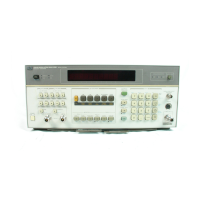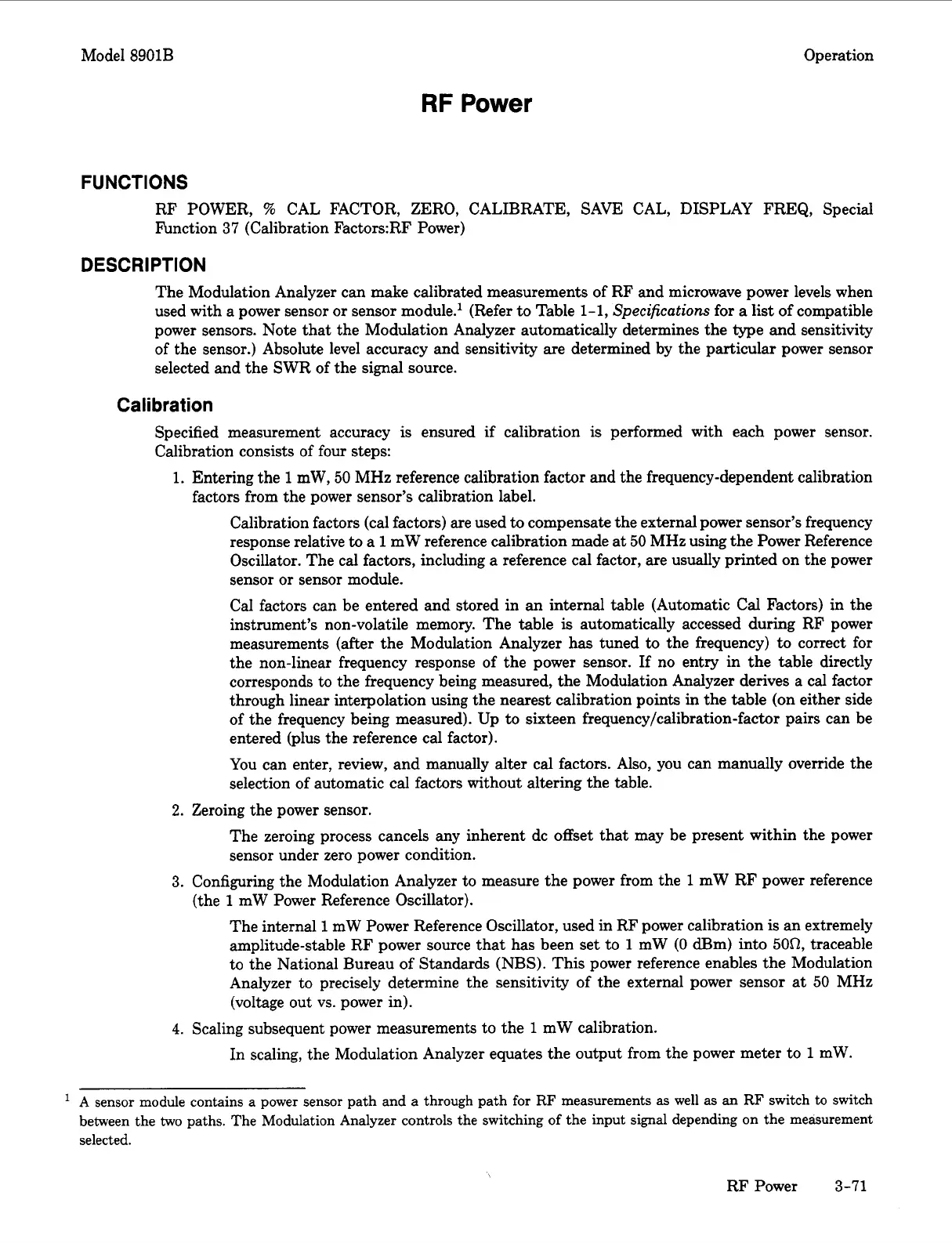Model 8901B
Operation
RF
Power
FUNCTIONS
RF POWER,
%
CAL FACTOR, ZERO, CALIBRATE, SAVE CAL, DISPLAY FREQ, Special
Function 37 (Calibration Factors:RF Power)
DESCRIPTION
The Modulation Analyzer can make calibrated measurements of RF and microwave power levels when
used with a power sensor
or
sensor module.’ (Refer to Table 1-1,
Specifications
for a list of compatible
power sensors. Note that the Modulation Analyzer automatically determines the type
and
sensitivity
of the sensor.) Absolute level accuracy and sensitivity are determined by the particular power sensor
selected and the SWR of the signal source.
Calibration
Specified measurement accuracy
is
ensured if calibration
is
performed with each power sensor.
Calibration consists of four steps:
1.
Entering the
1
mW,
50
MHz reference calibration factor and the frequency-dependent calibration
Calibration factors (cal factors) are used to compensate the external power sensor’s frequency
response relative
to
a
1
mW reference calibration made at
50
MHz using the Power Reference
Oscillator. The cal factors, including
a
reference cal factor, are usually printed on the power
sensor
or
sensor module.
Cal factors can be entered and stored in
an
internal table (Automatic Cal Factors) in the
instrument’s non-volatile memory. The table
is
automatically accessed during RF power
measurements (after the Modulation Analyzer has tuned
to
the frequency) to correct for
the non-linear frequency response of the power sensor.
If
no entry in the table directly
corresponds to the frequency being measured, the Modulation Analyzer derives a cal factor
through linear interpolation using the nearest calibration points in the table (on either side
of the frequency being measured). Up to sixteen
frequency/calibration-factor
pairs can be
entered (plus the reference cal factor).
You can enter, review,
and
manually alter cal factors. Also, you can manually override the
selection of automatic cal factors without altering the table.
factors from the power sensor’s calibration label.
2.
Zeroing the power sensor.
The zeroing process cancels any inherent dc offset that may be present within the power
sensor under zero power condition.
3. Configuring the Modulation Analyzer to measure the power from the
1
mW RF power reference
(the
1
mW Power Reference Oscillator).
The internal
1
mW Power Reference Oscillator, used in RF power calibration
is
an extremely
amplitude-stable RF power source that has been set to
1
mW
(0
am) into
500,
traceable
to the National Bureau of Standards
(NBS).
This power reference enables the Modulation
Analyzer to precisely determine the sensitivity of the external power sensor at
50
MHz
(voltage out vs. power in).
4.
Scaling subsequent power measurements to the
1
mW calibration.
In scaling, the Modulation Analyzer equates the output from the power meter to
1
mW.
A
sensor module contains a power sensor path and a through path for RF measurements as well
as
an
RF switch
to
switch
between the
two
paths. The Modulation Analyzer controls the switching of the input signal depending on the measurement
selected.
RF
Power 3-71

